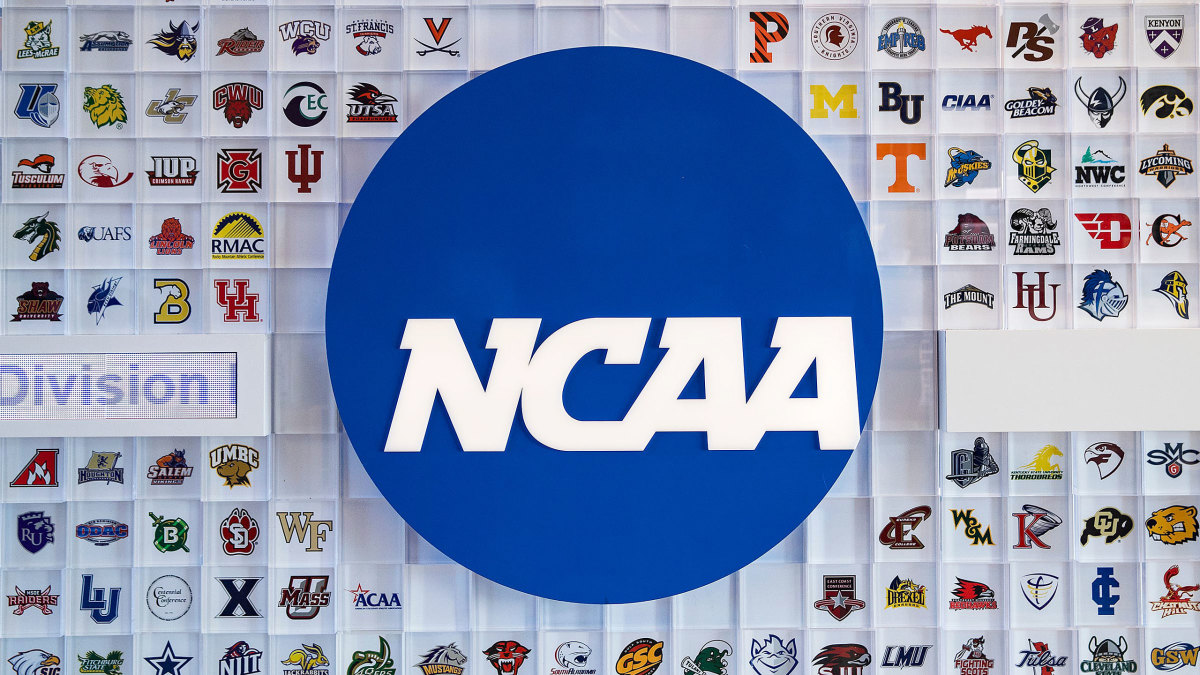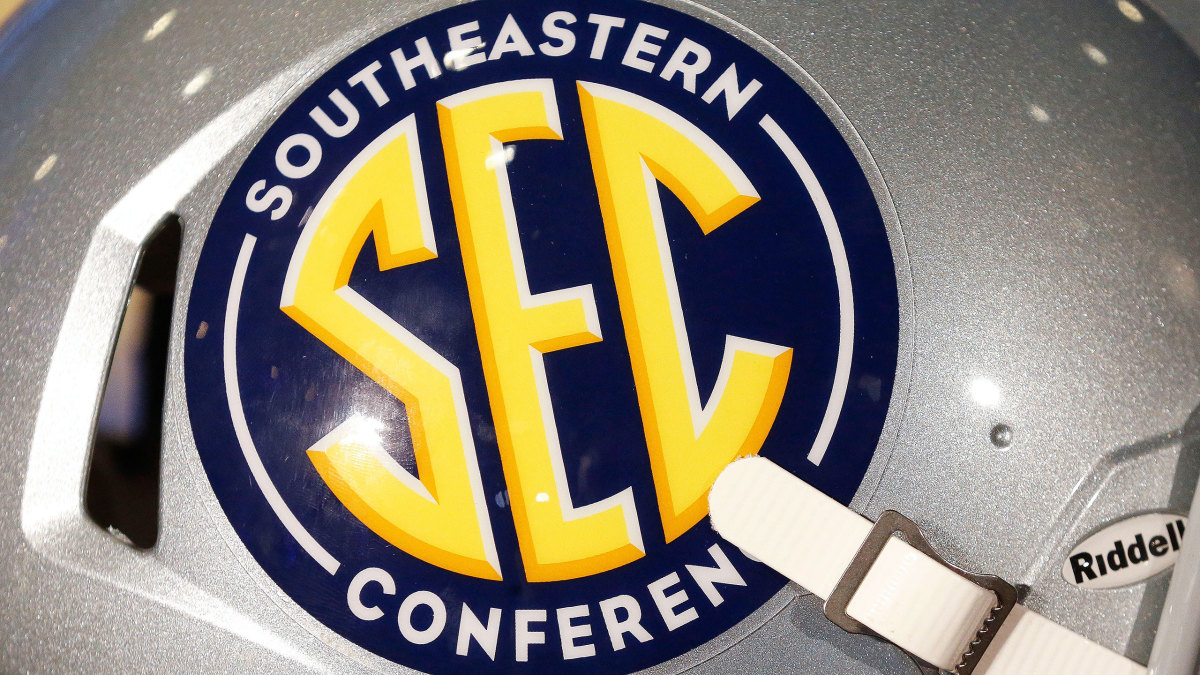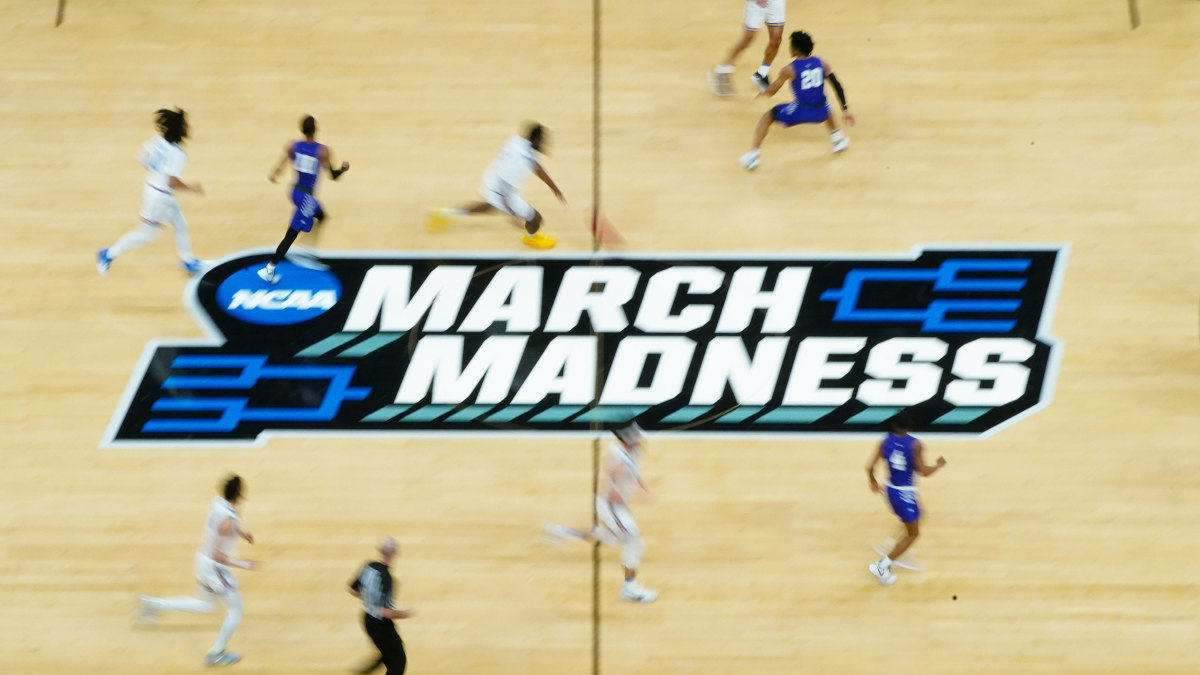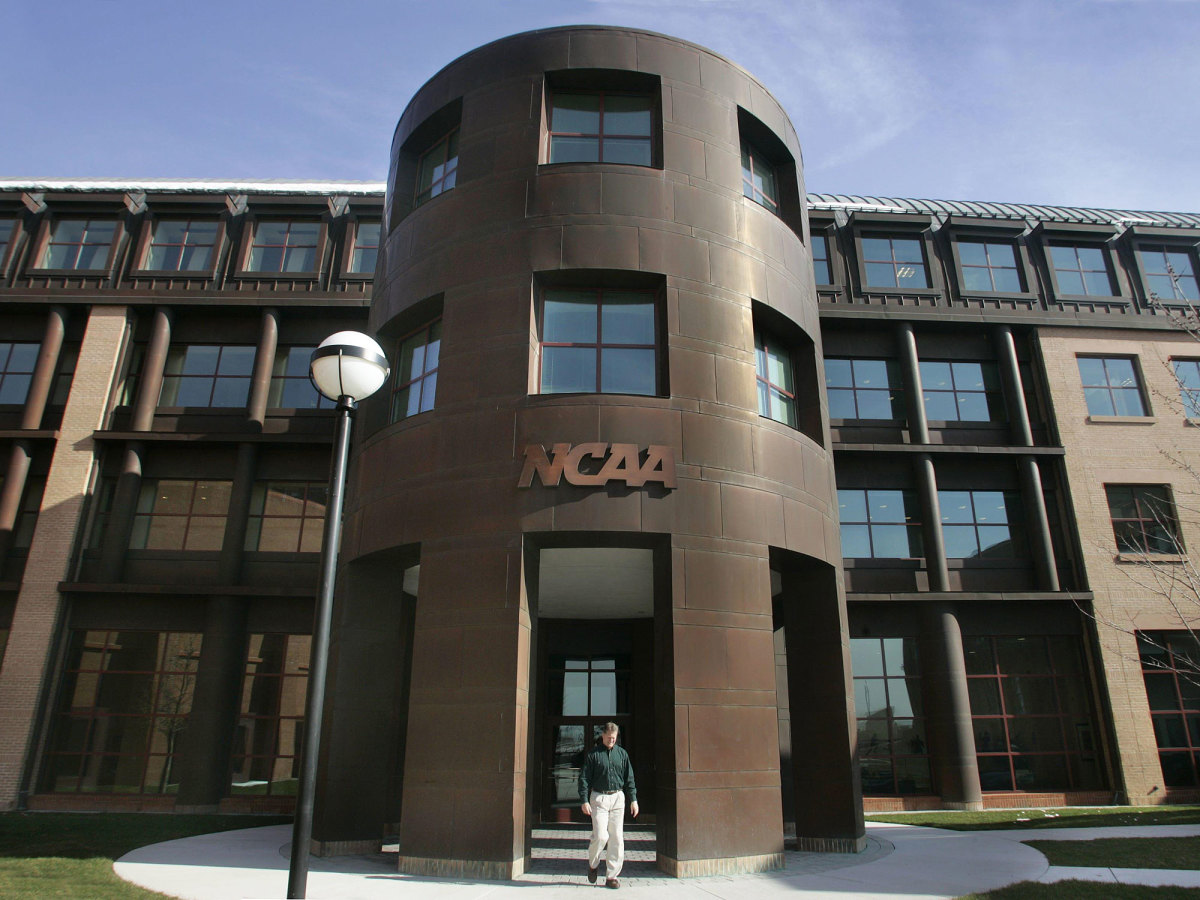The Fight Over the Future of College Sports Is Here: 'It Needs to Implode'

If anyone knows the issues within the NCAA, it’s Betsy Mitchell.
She was an athlete at one of college athletics’ richest juggernauts, Texas, has been a coach at Division I’s lowest tier and now is the athletic director of one of the NCAA’s smallest schools, Division III Caltech. She intimately understands the disparities between the NCAA’s 1,000 member schools. And she’s got a suggestion to fix it.
“The commercial priorities of some members means they need to go do their own thing,” says Mitchell. “I kind of wish they would.”
The rapid growth of a now-bloated Division I and surging revenues at the top of college sports have created an untenable situation: schools governing under the same umbrella despite striking disparities.

As a new gap splinters the haves and have-nots, college sports leaders are gearing up for the most transformative year in the industry since the late 1970s, a now 50-year-old fight barreling toward a figuratively “bloody” end, administrators say.
“Change is imminent,” says Ryan Cassidy, a former Rutgers football player who serves on several NCAA committees and has been integral in the latest transformation discussions. “This is going to be a rebirth.”
At this week’s 2022 NCAA convention in Indianapolis, just blocks away from the NCAA’s own headquarters, college leaders are poised to take the first step in the process of transforming how college athletics governs itself. A new, streamlined constitution—one that grants authority to each division to create its own policy—is expected to be approved Thursday in a vote of Division I, II and III members.
It sets the stage for a much more important step: the restructuring of Division I.
A microcosm of the NCAA, Division I is a fractured group of 350 schools, 32 conferences and three subsections—FBS, FCS and non-football-playing members—whose differing resources, missions and abilities have made it nearly impossible to regulate competitive equity. There is animosity and tension among them, mostly centered on how rules are made and how money is distributed and spent.
The conversation is largely driven by the FBS elite: the Power 5—the SEC, Big Ten, Pac-12, ACC and Big 12—and its commissioners, two of whom sit on the NCAA’s transformation committee, the group charged this spring with restructuring D-I. College sports’s richest leagues want to keep more revenue, spend more of that money in ways they currently cannot because of legislation and engineer their schools to participate and qualify in more championship events.
Many administrators fear oncoming threats from the rich and powerful, such as creating a fourth subdivision of schools and deregulating legislation that could further widen the gap in D-I, eliminating automatic qualifiers to championships and overhauling a revenue distribution model that keeps some smaller schools afloat.
“Everything is on the table,” says Tom McMillen, the president of Lead1, an association representing the FBS athletic directors.
“Division I is too large,” adds Big 12 commissioner Bob Bowlsby. “There are more ways in which we are different than are ways that we are the same. There is an appetite [in the Power 5] for more control over our fate.”
And if it takes threats of secession?
“It was only through threats of taking our ball and going somewhere else that we got [legislative powers] last time,” Bowlsby adds. “You hate to do more saber-rattling, but we need change.”
This week, within an array of downtown hotels and convention spaces, administrators from various corners of Division I will argue from their own perspectives and for their own constituents in a showdown one Power 5 athletic director describes as a “blood fight.”
Will the little guys be left behind?
“You’re hoping for the best but expecting the worst,” says James Downer, athletic director at Saint Francis, an FCS school in Pennsylvania. “I don’t feel like I’m on a plane and it’s about to crash, but I do feel like I’m on a plane and I don’t know where it’s going to land.”

The long-feared secession of the Power 5 is not expected during this spring’s NCAA transformation process, multiple college leaders say. That doesn’t mean those same administrators believe it isn’t the correct course of action.
In a study conducted by the NCAA, two-thirds of Power 5 executives believe a governance change is needed and suggestions include a Power 5 breakaway from D-I or an FBS breakaway from NCAA oversight. In fact, one anonymous SEC president wrote in the survey that the Power 5 “should be an organization unto itself” and leave the NCAA to manage everyone else.
“I think that would not be an ideal outcome,” says Jere Morehead, Georgia’s president, who sits on the transformation committee. “It’s possible we have a new subdivision,” he continues. “I will tell you that I don’t think it works well to have one D-I school with a budget of $10 million and another with a budget of $150 million and expect we can resolve those differences with some of the issues we have discussed.”
Money is the reason college sports finds itself in this current predicament, says Kathy DeBoer, executive director of the American Volleyball Coaches Association and longtime NCAA leader. The industry faces an “existential crisis” that began a few years ago when the five richest conferences were granted autonomy powers in limited legislative decisions, she says. The gap grew larger with the Power 5’s mega-television deals and widened even more when the College Football Playoff arrived. The CFP distributes about 80% of its total revenue ($460 million) to Power 5 programs.
The disparity in athletic budgets among the 350 schools is unwieldy. Schools such as Texas, Georgia and Ohio State, with athletic budgets of at least $170 million, operate under the same umbrella as Winthrop, Chicago State and Alcorn, with budgets of less than $13 million. There are stark divisions even among the FBS. The median athletic budget is $123 million in the Power 5, $37 million in the Group of 5 and $16.7 million in the FCS.
The gaps began at the 1978 NCAA convention in Atlanta, where a bitter, yearslong fight between the haves and have-nots ended with the richest schools getting their way, dividing the sport of Division I football into two distinct bodies: I-A and I-AA (now known as FBS and FCS, respectively). Two years prior, the have-nots in the new I-AA had seethed that the split would be a “slap in the face.” The haves of the new I-A bristled at the thought of their “super” division eventually spending limitless resources on an amateur sport and thus again splitting. Division I has since become inflated, more than doubled in size since ’78. In the past 10 years, the FBS has grown by 10 teams.
Schools now have a financial incentive to elevate from one level to another. Those in FCS move to FBS to grab a slice of the CFP money pie. Division II programs move up to D-I to get a cut of the NCAA men’s basketball tournament revenue. All of it has created the ever-expanding revenue chasm between programs that legislatively operate together, the low-resource programs at times holding back the cash-flushed powers.
“I’m a pessimist about the current state of Division I and college athletics. I believe it needs to implode, truly implode,” says Amy Huchthausen, a two-time captain of Division III Wisconsin–La Crosse’s softball team before working at NCAA headquarters, the ACC and Big East, and becoming the first woman commissioner of the America East. “We are heading down the path of a true implosion. Just blow it up.”
Many around college sports share Huchthausen’s belief.
“D-I is dysfunctional,” says one Big 12 athletic director who spoke to Sports Illustrated on the condition of anonymity. “We come together to make rules and legislate equality and it just doesn’t work.”
The rewritten constitution has opened the door for the creation of a new subdivision in Division I. Many administrators, from all levels of college sports, believe a fourth subdivision is necessary.
“I’m all for D-I subdividing,” DeBoer says.
“We are going to have to realign,” says Cassidy, the ex-Rutgers football player serving on NCAA legislative committees. “Do I know what that structure looks like? I have no idea.”
Some believe any new subdivision would encompass at least part of the 130 FBS programs, include new membership criteria and provide that membership with an extra level of autonomy. If Power 5 leaders wished, they could conceivably set the criteria at a level unattainable for some teams, conceivably cutting out Group of 5 programs. “There will be hurt feelings,” one administrator says.
The FCS and FBS already play by many different rules (scholarship maximums, for instance, and practice time), but would a new NCAA subdivision go even further?
“Some might say we already have subdivisions. No, we have groupings,” says Tulane athletic director Troy Dannen, a member of the NCAA transformation committee. “We play mostly by the same set of rules. Subdivisions may have different sets of rules and requirements.”
Huchthausen, now an executive for a Boston-based startup, FinTech, believes a new subdivision would at least provide certain schools with a more competitive reality. She points to the facilities arms race that has swept across the upper reaches of college sports. According to the Knight Commission, FBS public schools had an annual debt service of $843 million.
“The Power 5 continues to find the money to support this. This mindset filters down to the bottom level where they can’t afford it but still force it,” Huchthausen says. “There’s this psychological industry that is driving all this. It’s a race to raise more and more money and a race to win more and more games. And those races are not winnable.”
Power 5 secession could crater what is historically college sports’s most significant event (March Madness), as well as countless other Olympic sports championships in which non–Power 5 programs often shine and even win titles (in 2020, for instance, six of those teams won D-I championships).
But there must be a way to still engineer a basketball tournament involving all 32 conferences, right?
“No one wants to be the entity that breaks up the history of college sports,” Huchthausen says, “but at what cost do we preserve tradition and history?”

College officials who spent the past few months collectively working to agree on a refined constitution say the most contentious of the issues centered, in no surprise, on money. Division I leaders decided to keep the amount of revenue it annually distributes to Division II and Division III despite the two lower tiers demanding a bigger cut. For years, they have split 8% of the revenue funds, roughly $80–100 million, mostly derived from the D-I men’s basketball tournament and used to operate D-II and D-III championships.
At times heated, the money debate was “the elephant in the room,” says ACC commissioner Jim Phillips, who is also a member of the NCAA’s constitution and transformation committees.
There are many elephants in the room: scholarship regulations, automatic qualifiers for NCAA championships and revenue-sharing models.
For many programs, the NCAA designates scholarships to each team to parcel over a certain amount of roster spots. While football gets 85 full scholarships, baseball receives 11.7 to spread across a roster size of 27. In swimming, men’s teams get 9.9 scholarships over an average roster size of 30—a 3-to-1 tuition-to-scholarship ratio that is normal among Olympic sports.
At an NCAA convention in 1976, smaller programs wanted to implement need-based athletic aid, eliminating scholarships for athletes whose families were financially stable enough to afford college. The upper tier of programs argued against the movement. After lengthy debate, the proposal was defeated by a slim margin, 120–112. Now, the two groups are again at odds, as some of the sport’s most powerful people are fighting to expand scholarships.
Greg Sankey, who is presiding over the NCAA’s most powerful league (the SEC) and co-chairing the NCAA transformation committee, has publicly expressed the Power 5 should have more autonomy to create scholarship legislation that benefits athletes more. Last year, NCAA governance committees refused to adopt at least two pieces of SEC-sponsored legislation involving an expansion of aid, eliciting frustration from the conference and its leaders.
“There is a need to look at that,” Sankey says. “At Division I, we have some important questions to ask and answer, which likely produces some difficult conversations. The question about finances goes right back to how do you support young people first, and I think that has to be inherent.”
In the SEC, many administrators believe the conference can afford and should provide every athlete with a full scholarship, eliminating the partial scholarships that exist in many Olympic sports. Not all schools or leagues—even those in the Power 5—can afford to offer full aid to their more than 300 athletes. The SEC distributed an extra $23 million to its members last year after borrowing the money against a new television deal the conference signed with ESPN, rumored to be worth nearly a half-billion dollars.
But scholarship aid isn’t the only item some Power 5 conference officials want to change. The NCAA transformation process is expected to produce a streamlined rulebook and deregulation of dozens of policies. The rulebook over the years has grown with reactionary legislation, and the NCAA has faced several lawsuits partly because rules implemented to govern competitive equity made it difficult to modernize, says Morehead.
Sankey says campuses and conferences will have “more responsibility” as it relates to rulemaking. Nonessential policies may go away completely or be left up to leagues. Those include rules over countable staff members, for instance, and arbitrary recruiting bylaws policing phone calls and messages to prospects.
“If Alabama makes an extra $5 million and they can afford to bring on three more sports psychologists, they should be able to,” says Kendall Spencer, an NCAA athlete turned attorney who sits on the transformation committee. “Division I has gotten very big. It’s only a problem if you have a one-size-fits-all model.”
Another issue is what’s not in the rewritten constitution: There is no guarantee of automatic qualifiers for NCAA championships and no revenue-sharing model, two of the most significant items for the lower subsections of Division I.
“It’s not as if those things are going away, but they are on the table to be discussed,” Horizon League commissioner Julie Roe Lach says. “Those are pretty darn important to everyone in the division.”
Each Division I conference champion, or tournament champion, earns an automatic bid into NCAA-sanctioned championship events, most notably the D-I men’s basketball tournament, the NCAA’s only true moneymaker (roughly $900 million in annual revenue). Conferences earn distribution units largely based around their qualifying teams (1) advancing in the tournament, (2) sponsoring the most sports and (3) offering the maximum number of scholarships. Leagues then distribute the units to their members.
If the revenue distribution from automatic qualifying bids and distribution units stops or slows, the benefits that schools provide athletes are at stake, says Downer, the athletic director at FCS Saint Francis (PA), a school with an athletic budget of about $16 million. St. Francis earns about $600,000 in NCAA distribution each year, or roughly 4% of its budget. This past year, the school received a bonus of sorts: $52,000 in grant money from the CFP. It helped with book scholarships for football players. “There is a misconception that this money is going to salaries and facilities,” Downer says. “The reality is, on this level, it’s designed to benefit the student-athlete.”
Eliminating automatic qualifier (AQ) bids, as well as changing the revenue distribution model, is a recipe for a political backlash. Automatic qualifiers are a way to keep Olympic sports growing, says DeBoer. The impact of their elimination would be “dramatic,” she says, and would result in the discontinuation of some programs. And imagine the reaction from local or national lawmakers whose state universities are no longer playing for a chance at the Big Dance, says one administrator. Another asks, what about the historically Black conferences?
“I think the concept of every conference having AQs into every championship, I think it bears scrutiny,” Bowlsby says. “I’m not suggesting it’s going to change in every situation, but there are an awful lot of conferences chasing the holy grail of access and money. If automatic qualification into the basketball tournament is your most important [issue], that’s fine, but you’d have to cede control in other areas.”
One league commissioner, granted anonymity, says he has “100% confidence” in the revenue-sharing model changing to incorporate the women’s basketball tournament. Conferences would earn units based on qualifying teams and their success not just in the men’s tournament but the women’s, as well.
Some, like McMillen, believe now is the time to change the AQ structure. Given the large number of D-I conferences, he says stripping AQ bids would allow leagues to consolidate, a move that would save money and create more regional rivalries. Currently, leagues are hesitant to consolidate, for fear of losing their AQ bid.
“Is there some magic to having 32 conferences? No,” McMillen says. “The whole AQ thing breeds inefficiency.”
Each year, at least a dozen automatic qualifiers take spots that could go to major conference programs who are on the bubble and left out, an issue where “the tension is mounting,” says one Power 5 athletic director. “We are letting anyone into Division I from Division II and all the sudden that school gets a shot at the tournament over an eighth-placed SEC team?”
An all–Power 5 NCAA tournament, suggested recently by West Virginia men’s coach Bob Huggins, is an idea that has elicited scowls. The NCAA tournament’s popularity is at least partially built on the propensity to produce upsets—the charm of watching a small conference Cinderella march past a big-name program.
To some, it rings alarms of antitrust—an unsettling word for the NCAA’s beleaguered leadership, villainized recently in the courts and Congress over antitrust matters. An all–Power 5 tournament “reeks of professional league, whether or not the athletes are paid,” says Gabe Feldman, a Tulane sports law professor and expert on NCAA matters.
In professional sports, salary caps bring competitive equity. With each year, college is breaking free of legislation that keeps the moneymakers from growing too big.
The Knight Commission has proposed a new financial framework for the $3.5 billion in annual Division I shared revenue distributions to better direct money to athletes' education, health and safety.
"Our proposed model puts constitutional principles into practice," said Amy Perko, CEO, Knight Commission on Intercollegiate Athletics, an independent group that promotes educational reforms in college sports.
For example, the principle of gender equity would require the NCAA to change its distribution criteria to reward schools for the success of women's teams not just the success of men's basketball teams. The model also would require a conference-based approach to financial responsibility that could include incentives or spending caps.
"While Division I reforms itself and before the CFP expands, it is imperative to create a new financial framework tied to the priorities of athletes education, health, and safety," Perko says.
Inevitable Playoff expansion could double the $460 million the CFP currently generates.
“What I see coming with [Playoff] expansion is student athletes saying, ‘Where’s our share?’” says Maryland AD Damon Evans, who sits on the transformation committee. “The conversations aren’t always going to be the easiest when dealing with money. We [Power 5] want this and they [other subdivisions] want that. Those are the conversations that will be had and hopefully we’ll come up with solutions.”

Given the Supreme Court’s NCAA v. Alston ruling, NIL-based recruiting inducements and a transfer portal that has evolved into a free agency waiver wire, college athletics seems bound to diverge from NCAA membership. At its end, says McMillen, is an employee-employer relationship between athlete and school, where collective bargaining, revenue-sharing and contracts exist.
College sports can either get in front of this movement or, as with NIL, be at the mercy of state laws, the courts or Congress itself, McMillen suggests. “Right now about 90% of my schools would resist, but you could have a whole division of college sports and run it like a business,” he says.
Several college officials feel similarly. Evans, who sits on the transformation committee, says it’s time for decisive action and wholesale changes, to appease Congress and satisfy the athletes themselves.
“There is a lot of talk about pay for play,” says Evans. “Are we doing right by student-athletes when you see the dollars in our industry continue to grow? This snowball has been coming down the hill and we’ve let the snowball run us over once.”
Huchthausen says there is an inherent tension and conflict that exists in college sports being part of higher education—a hugely commercial enterprise situated in the construct of academia. Administrators are walking a tightrope, she says, and changing rules doesn’t solve that problem.
“I don’t know what really keeps our friends at Alabama and Oklahoma [from] going to CBS and saying, ‘We’re going to do our own thing and you’re going to follow us,’” says Downer, the FCS AD. “This exercise we’re doing right now, we’re laying the table for that.”
Mitchell, the former Olympic swimmer at Texas and athletic director at Division III Caltech, isn’t one who is fearful of that change. D-II and D-III would have to find other avenues to fund their championships, but so be it.
“The main thing coming out of this seems to be the realization that the divisions are quite different and need not be tethered together to serve their unique needs,” she says. “College presidents have allowed this to happen—the salaries, the competitive egos. And don’t get me wrong, I love watching college football. But who’s really going to fix it?”
That’s up to the transformation committee. Here in Indianapolis, the committee’s real work begins after the convention; a spring and summer’s worth of meetings is expected to produce an outcome by August.
The latest installment of the elite’s power grab harkens back to nearly 50 years ago. In attendance at the 1978 convention, Sports Illustrated’s John Underwood wrote, “What the big football schools want is … autonomy.”
Soon, they will have more of it than ever before. Why? Because money is the biggest bargaining chip. And in this poker game, one group holds an unbeatable hand.
“It’s not off the table that the Power 5 will walk,” says one Group of 5 athletic director. “It’s going to get contentious. If the P5 goes into this, and FBS too, thinking they’ve got to win everything and have zero give-and-take, does it get down to, ‘We’re going to take our ball and go home’?”
More College Coverage:
• How Georgia Finally Broke Through to Win It All
• Way-Too-Early Top 25 for 2022 Season
• Tension Looms as CFP Expansion Is Delayed—Again
